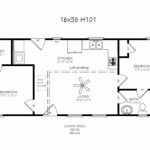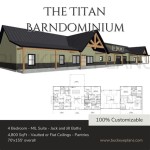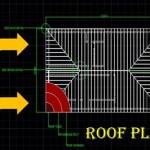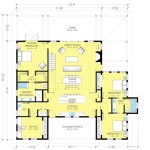Understanding Floor Plans in Building Construction (Tamil Meaning: கட்டிட கட்டுமானத்தில் தரைத் திட்டம் என்றால் என்ன)
In the realm of building construction, a floor plan serves as a fundamental blueprint and a critical communication tool. It represents a scaled diagram of a room or building viewed from above, depicting the arrangement of walls, doors, windows, fixtures, and other essential features on a single level. Essentially, it is a horizontal cross-section of a building, typically drawn at a height of around four feet above the floor, allowing the viewer to see the layout as if the roof were removed.
Floor plans are not merely aesthetically pleasing drawings; they are indispensable documents that guide the entire construction process, from initial design to final execution. They provide a clear and concise representation of the building's spatial organization, enabling architects, engineers, contractors, and homeowners to visualize and understand the intended design. This understanding is crucial for effective collaboration, accurate cost estimation, and the avoidance of costly errors during construction.
The importance of a well-defined floor plan extends beyond the construction phase. It also plays a significant role in interior design, furniture placement, and even the future resale value of the property. A thoughtfully designed floor plan can maximize space utilization, improve functionality, and enhance the overall living experience. Conversely, a poorly planned floor plan can lead to cramped spaces, awkward layouts, and decreased property value.
Several types of floor plans exist, each serving a specific purpose. These include schematic floor plans, which are preliminary drawings used for initial concept development; construction floor plans, which provide detailed information for builders and contractors; and presentation floor plans, which are often used for marketing purposes and emphasize the aesthetic aspects of the design. Regardless of the type, all floor plans share the common goal of accurately representing the building's layout and facilitating clear communication among all stakeholders.
To effectively interpret and utilize floor plans, it's essential to understand the standard symbols and conventions used in their creation. These symbols represent various building elements, such as walls, doors, windows, stairs, and fixtures. Adherence to these standards ensures clarity and consistency across different plans, reducing the likelihood of misinterpretation and errors.
Floor plans are typically drawn using specialized software, such as AutoCAD, Revit, and SketchUp. These programs allow architects and designers to create precise and detailed drawings, incorporating accurate measurements and specifications. Furthermore, these tools facilitate easy modification and revision of the plans, ensuring that they remain up-to-date throughout the design and construction process.
Key Point 1: The Role of Floor Plans in Project Coordination
Floor plans are not just blueprints; they are central to coordinating all aspects of a building project. They serve as a common reference point for architects, engineers, contractors, subcontractors, and even interior designers. By providing a clear visual representation of the intended design, floor plans facilitate effective communication and collaboration among these different stakeholders. This shared understanding is crucial for ensuring that the project stays on schedule, within budget, and meets the desired quality standards.
For instance, a structural engineer relies on the floor plan to analyze the load-bearing capacity of walls and columns. The mechanical engineer uses it to design the HVAC system, ensuring proper ventilation and temperature control. The electrician uses it to plan the electrical wiring and outlet placement. Even the plumber needs the floor plan to determine the location of water pipes and drainage systems. Without a detailed and accurate floor plan, these different disciplines would struggle to coordinate their work effectively, leading to potential conflicts and delays.
Moreover, floor plans play a vital role in managing change orders. During the construction process, unforeseen circumstances may necessitate modifications to the original design. In such cases, the floor plan serves as the basis for evaluating the impact of the proposed changes and implementing them in a coordinated manner. This helps to minimize disruptions to the project timeline and budget.
Essentially, the floor plan acts as a central hub of information, ensuring that all project participants are on the same page and working towards a common goal. Its importance in project coordination cannot be overstated.
Key Point 2: Understanding Floor Plan Symbols and Conventions
The ability to accurately interpret a floor plan hinges on understanding the symbols and conventions used in its creation. These symbols represent various building elements, such as walls, doors, windows, stairs, and fixtures. A consistent and standardized set of symbols ensures that the plan is easily understandable by all stakeholders, regardless of their background or experience. Without a clear understanding of these symbols, misinterpretations are likely, leading to errors and delays in the construction process.
For example, walls are typically represented by thick, solid lines, while doors are represented by a curved line indicating the direction of swing. Windows are often depicted as a set of parallel lines, indicating the sash and frame. Stairs are usually shown with a series of parallel lines representing the steps, along with an arrow indicating the direction of ascent. Fixtures, such as toilets, sinks, and bathtubs, are represented by stylized outlines.
In addition to these basic symbols, floor plans often include annotations and dimensions. Annotations are notes that provide additional information about specific features, such as the type of material used or the height of a ceiling. Dimensions indicate the size and location of various elements, allowing builders to accurately lay out the building's components.
Knowing the industry standards for these symbols and conventions is vital. There are some subtle differences that can affect the interpretation of the plan. Understanding how specific materials are noted, how wall thicknesses are indicted, and how various plumbing and electrical fixtures are presented will greatly increase the plan reader's comprehension and ability to work from the design.
Mastering the language of floor plan symbols and conventions is essential for anyone involved in the building construction process. It enables them to effectively communicate with architects, engineers, and contractors, ensuring that the project is executed according to the intended design.
Key Point 3: Modern Tools and Technology in Floor Plan Creation
The creation of floor plans has been revolutionized by the advent of modern tools and technology. Gone are the days of hand-drawn blueprints, replaced by sophisticated software programs that allow architects and designers to create precise and detailed drawings. These programs, such as AutoCAD, Revit, and SketchUp, offer a wide range of features that streamline the design process and enhance the accuracy of floor plans.
One of the key advantages of using these software programs is their ability to create three-dimensional models of the building. This allows architects and designers to visualize the building from different perspectives, identify potential design flaws, and make necessary adjustments before construction begins. Furthermore, these models can be used to generate photorealistic renderings, providing clients with a realistic preview of the finished product.
These tools also greatly streamline the collaboration process. Because plans are usually share digitally, all stakeholders can access the most up-to-date version of the plans in real time, regardless of their location. Software allows multiple individuals to work on the same plan simultaneously, facilitating efficient communication and coordination. Updates can be quickly distributed and reviewed, making the entire process smoother.
Finally, modern software improves accuracy in the floor plans. Precise measurements can be entered and maintained across the various drawings. Automated features will highlight potential errors or inconsistencies. This precision reduces the risk of mistakes during construction, saving time and money.
The use of modern tools and technology has transformed the floor plan creation process, making it more efficient, accurate, and collaborative. As technology continues to evolve, floor plans will undoubtedly become even more sophisticated and indispensable in the building construction industry.

Simple Floor Plan In Autocad Tamil

Principles Of Planning Civil In Tamil

What Is Set Back Plot Area And Built Up In Tamil Civil Technical

Construction Drawings

How To Read A Floor Plan

Autocad Tutorial In Tamil 30x42 House Ground Floor Plan Civil

How To Read A Floor Plan

Inspirational 3 Bedroom House Plans Per Vastu 4 Meaning

How To Read A Floor Plan

How To Read A Floor Plan
Related Posts








